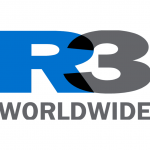
Kantar, the global data consultancy has laid out some predictions about out how technologies, platforms and business models will shape media in the 2020s and beyond.
Outlining the forthcoming trends, Jane Ostler, global head of media from Kantar’s Insights Division defines ‘media’ as “editorial content, tech platforms, paid advertising, PR, online and well-established channels, as well as new ones that are purely in the experimental phase”. In short, media is now a lot of things, and they are all connected in unexpected ways.
Some key media trends include three technologies that could completely change how we consume media, and how that will influence the ad and media industries.
Streaming fatigue
Subscription video on demand (SVOD) is becoming increasingly congested with Amazon Prime Video, Netflix, Hulu to compete against Disney+, Apple TV+, HBO Max and NBC Peacock in 2020.
Sushmita Jain, a director of data science at Kantar, asked “this increased competition may seem healthy, but will we see subscription fatigue leading to industry consolidation?”
She pointed to research outlining just how limited the public kitty is in SVOD.
“44% of connected consumers who pay for an online streaming service have at least two subscriptions, 18% pay for at least three, and 7% pay for four or more. This suggests that the market could prove difficult for new subscription-based streaming services, as consumer attention, and wallets, only stretch so far.”
A separate recent UK study found that most Brits won’t pay more than £20 a month for TV streaming. When demand rises but the consumer wallet doesn’t spend, we may see a rise in piracy. Or the cable bundle may again look like a luxury once again negating the need to navigate countless competing SVOD services.
According to Kantar, the services with the highest quality original content and understanding of their audiences will come out on top.
Meanwhile, broadcasters will have to ramp up their understanding of audiences to remain relevant. The report in particular gave credit to the performance of Love Island on ITV. The broadcaster has announced it will run the show twice a year now, it wants more from its golden goose. It continues to pull younger audiences into TV and the industry is looking to replicate its success.
Jain outlined how the rise of streaming is changing advertising. “There will be strategic opportunities for advertisers such as product placement, branded integrations and co-promotions. But the rise of ad-free subscription platforms will also mean restricted opportunities for advertising.”
Smart Speakers
By all accounts, we will be talking to our tech in 2020, the roll-out of smart devices and 5G tech will see to that.
Heather O’Shea, executive vice president of advertising and media effectiveness at Kantar, said smart speakers are by no means ubiquitous yet, as according to Comscore only a quarter of US adults own such a speaker.
But she outlined: “Newer generations will grow up with audio seamlessly embedded into their lives; they will voice their commands, questions and desires and expect speedy responses from a variety of voice-enabled devices.”
The role of smart speakers has probably been overhyped in years-gone-by argued digital strategist Rob Blackie. Rather than glorious life-changing tasks, current use is weighted towards basic activities like setting alarms, reminders, streaming music and checking the weather.
However, the devices are increasing suited to interrogation and interaction. News media sees a future where inquisitive readers can ask questions of the reporting and be fed links and information from the large catalogue of pre-existing content.
But as audiences move to these digital devices, so are advertisers.
63% of marketers say they plan to increase spend in podcast advertising over the next 12 months. The “intimate and highly personal nature of podcasts” offers advertisers a highly receptive audience. “Being one of the least cluttered channels, they are also one of the most engaging.”
It is also worth noting that it is particularly difficult to skip audio ads in any form. Did digital audio inadvertently provide a solution to the adblocking crisis?
Radio will follow podcasting into the digital domain. Digital is allowing for the creation of niche radio stations. In the UK, Bauer Media is branching out its most known radio brands into select decades, a single set of human hosts are setting the scene between eight different playlists on Absolute. One show can provide the reach of eight under these conditions.
O’Shea said: “2020 could be the make-or-break moment for newer audio channels. Brands could lose interest in voice commerce if smart speaker manufacturers fail to improve their functionality.”
Esports is ‘still’ coming
We’ve been talking about the rise of esports for years now, to the uninitiated, viewing figures, audience attendances and tournament prize purses beggar belief.
Kantar said more than 1.2 million people from different backgrounds claim to watch esports in the UK alone. Globally these figures add up, naturally with esports swelling in line with streaming technology, audiences are global by their very nature.
The growth of Amazon’s social TV platform Twitch illustrates this, usage totalled 292bn minutes in 2016 and is expected to reach 600bn by the end of 2019.
Jose Colagrossi, global chief operating officer of Kantar Sports outlined that brands like Gillette, Mastercard, Dell, Coca Cola, Toyota, Intel, Nike and ABInbev have all made significant shifts into the space.
He said: “We predict that as esports tournaments gain more mainstream prominence in 2020, they will present lucrative opportunities for the media owners and advertisers who are ready to capitalise on it.”
Brands are still optimising the media opportunities available, both in-game, in-stadia, in-stream, via sponsorship of any of the above and more.
Colagrossi said: “Offering a seamless blend of online and real life, esports present a wide array of innovative media opportunities. It will be critical to understand the new rules; the huge and highly-engaged audience will spot inauthentic attempts to encroach on their community from a mile off. But for those who take time to understand how to fit in to the esports world, there are valuable opportunities for content, advertising and sponsorship.”
The uneasy alliance between sports and esports will continue. For example, football clubs establishing their own esports teams, and Formula One streamed over Twitch with gamification, concluded Colagrossi.
And we know the power of the Twitch streamer, with Ninja’s move to Microsoft’s Mixer platform pulling substantial audiences.
But can esports grow in isolation from SVOD subscription fatigue or will it too find its ceiling.
On the broader report, Ostler concluded: “Our experts have identified 12 trends… they fall into three main themes: the technology trends transforming the media landscape; the spaces that brands can credibly occupy; and the context and catalysts for change.”
Outlined in the report also was how 5G will affect media production and distribution, digital commerce, the death of the tracking cookies, the maturation of influencer marketing, and continued media in-housing.
source: kantar report/http://www.thedrum.com
MARKETING Magazine is not responsible for the content of external sites.
An afternoon of conversations we never had, with leaders most of you never met.
Discover what’s possible from those who made it possible. Plus a preview of The HAM Agency Rankings REPORT 2024.
Limited seats: [email protected]
BOOK SEATS NOW









